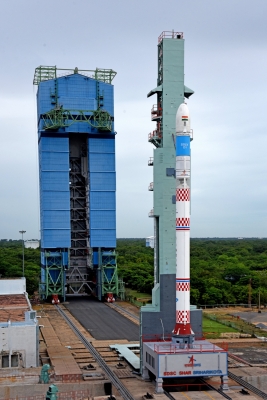By Venkatachari Jagannathan Sriharikota (Andhra Pradesh) 7 August : The first mission of India’s new rocket, which cost about $ 56 million Small Satellite Launch Vehicle (SSLV) this Sunday began in failure.
The failure of launching of small rockets driven by solid fuel places the spotlight on the safety of India’s space mission for humans that will be conducted via Geosynchronous Satellite Launch Vehicle-Mk III (GSLV-Mk III) with the difficult cryogenic engine stage.
The SSLV-D1 satellite was launched with two satellites around 9.18 a.m.The Indian Space Research Organisation (ISRO) declared that the satellites were not usable because they were placed in a different orbit from the one planned.
“All the stages worked as expected.Both satellites were infected.However, the orbit that was achieved was lower than what was expected, making the mission unstable.” ISRO said in a brief description of the mission.
“SSLV-D1 put the satellites in a 356 km x an elliptical orbit of 76 km instead of 356 km circular orbit.Satellites are no more usable.The problem is clearly determined,” ISRO said.
“Failure of a logic to detect a sensor malfunction and then take a salvage action that caused the deviation.A committee would analyze and make recommendations.In the event of the implementation of the recommendations, ISRO will come back in the near future with SSLV-D2” the space agency stated.
The Indian space agency has not commented about the reasons the reasons why the satellites, or at least EOS-02 was not lifted to the proper orbit through firing the motors onboard.
In the hope of celebrating in the 75th year of Independence in fashion, the ISRO launched its newly minted rocket Small Satellite Launch Vehicle – Developmental Flight (SSLV-D1).
On its initial flight in the year 2001, the SSLV-D1 was carrying an Earth observation satellite 02 (EOS-02) previously called Microsatellite-2 and weighing around 145 kilograms and the eight-pound AZAADISAT constructed by students from 750 of government schools that were supported by SpaceKidz India.
After 12 minutes of the rocket’s launch, ISRO announced the separation of EOS-02 from the AZAADISAT.
Then a sombre silence was observed around in the Mission Control Centre at the rocket port in this area with ISRO Chairman S.Somanath declaring: “The SSLV-D1 mission was completed.The phases of the rocket worked exactly as planned.There was some data loss in the final stage of the rocket.”
He stated that the data is being collected to find out the current status of the mission.
“The AZAADISAT got separated.
We know about the satellite at the night,” Dr.Srimathy Kesan the founder and CEO, SpaceKidz India told IANS.
At around 9.18 a.m.The rocket was able to break free of the launch pad that was first constructed here and soared into the sky, which was cloudy.The rocket’s trajectory was smooth with all of its solid fuel engines operating well.
The three-staged SSLV is primarily powered by solid fuel (total 99.2 ton) and also comes with an acceleration trimming module (VTM) powered by 0.05 ton of liquid fuel to ensure exact injection of satellites.
India’s latest rocket was 34 metres tall and weighed in at 120 tons.
As per the flight schedule that was in place, about 12 minutes into the flight, the SSLV-D1 was required to launch to space the satellite EOS-2.
It then the AZAADISAT within a couple of seconds.
According to ISRO SSLV is a ready-to- transfer rocket with modular and unison system with standard interfaces that can be used for production for the market.
The SSLV design drivers have a low cost, have a low turnaround times, and flexible in accepting multiple satellites, launch-on demand feasibility and minimal requirements for launch infrastructure and more, ISRO said.
The commercial part of ISRO, NewSpace India Ltd plans to transfer SSLV technology to production in the private sector following two or three of successfully completed missions.
The Indian space agency has stated that the EOS-02 satellite was an experimental optical imaging satellite with high spatial resolution.The goal is to create and launch an imaging satellite that is experimental with quick turnaround times and demonstrate the capability to launch on demand.
The launch of tiny satellites is expected to be an important aspect in the global space industry with approximately 7,000 satellites predicted to be in the sky in 2027.V.K.Saraswat the member of Niti Aayog, said during a space seminar.
In total, 7700 small satellites are anticipated to launch between 2027 and 2018 with the total amount of $38 billion Saraswat said.
(Venkatachari Jagannathan can be reached at [email protected])
vj/dpb
.







